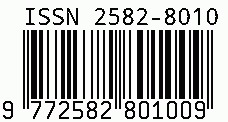
International Journal of Leading Research Publication
E-ISSN: 2582-8010
•
Impact Factor: 9.56
A Widely Indexed Open Access Peer Reviewed Multidisciplinary Bi-monthly Scholarly International Journal
Plagiarism is checked by the leading plagiarism checker
Call for Paper
Volume 6 Issue 4
April 2025
Indexing Partners



















Optimizing Resource Allocation in Hybrid Cloud: Cost and Performance Efficiency
| Author(s) | Chandra Prakash Singh |
|---|---|
| Country | United States |
| Abstract | The hybrid cloud model combines the benefits of public and private cloud environments, offering scalability, flexibility, and cost-effectiveness. However, efficient resource allocation remains a critical challenge due to the complexity of managing disparate environments and diverse workloads. This white paper explores advanced techniques for optimizing resource allocation in hybrid cloud systems, focusing on achieving cost efficiency and enhanced performance. By leveraging machine learning algorithms, workload profiling, and predictive analytics, businesses can ensure optimal utilization of resources while maintaining service-level agreements (SLAs). This paper also discusses practical strategies, tools, and best practices to address common challenges in hybrid cloud environments. |
| Keywords | Hybrid Cloud, Resource Allocation, Cost Efficiency, Performance Optimization, Scalability, Workload Profiling, Predictive Analytics, Machine Learning, Service-Level Agreements, Cloud Management |
| Field | Engineering |
| Published In | Volume 3, Issue 11, November 2022 |
| Published On | 2022-11-01 |
| Cite This | Optimizing Resource Allocation in Hybrid Cloud: Cost and Performance Efficiency - Chandra Prakash Singh - IJLRP Volume 3, Issue 11, November 2022. DOI 10.5281/zenodo.14646872 |
| DOI | https://doi.org/10.5281/zenodo.14646872 |
| Short DOI | https://doi.org/g8zr8m |
Share this


CrossRef DOI is assigned to each research paper published in our journal.
IJLRP DOI prefix is
10.70528/IJLRP
Downloads
All research papers published on this website are licensed under Creative Commons Attribution-ShareAlike 4.0 International License, and all rights belong to their respective authors/researchers.

